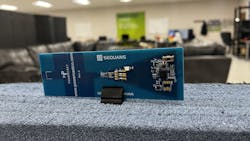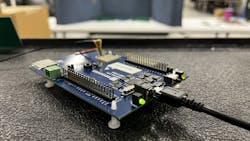“Power as a Service” Now a Possibility with Cellular-Based Remote RF Charging Platform
The Overview
Powercast has created a cellular-based RF power-over-distance wireless-charging platform, built around Sequans’ Monarch cellular IoT connectivity technology. The introduction of cellular technology into the over-the-air RF wireless-charging picture creates opportunities for more manufacturers to develop environmentally friendly smart-home IoT ecosystems that eliminate disposable batteries.
Who Needs It & Why?
Operating in the lower 600- to 900-MHz frequency bands licensed by mobile carriers, the Powercast cellular-based RF wireless charging platform offers the following benefits:
- Because cellular bands are licensed, or private, they have more flexibility on how much power they can transmit, on antenna gain, and on bandwidth, which enables end devices to charge faster and at greater distances when compared to unlicensed, or public, bands.
- As cellular service moves increasingly to higher frequencies like 5G to increase data throughput, carriers can monetize their underused low-frequency bands and offer “power as a service.”
- Ability to simultaneously charge many consumer devices at-a-distance, such as IoT sensors for smart-home security and automation, TV remotes, keyboards, earbuds, headphones, smart watches, fitness bands, and hearing aids.
Using licensed cellular frequencies to increase device charging power will allow manufacturers to create green, sustainable IoT devices that can charge more quickly and at longer distances from a cellular RF transmitter, it’s claimed.
Under the Hood
In demos at this week’s Mobile World Congress in Barcelona, a Sequans Monarch 2 cellular modem teams with Powercast’s 700-MHz antenna to transmit a 700-MHz RF cellular signal to Powercast’s PCC110 receiver and RF-to-dc converter chip.That then powers a battery-free sensor beacon to transmit temperature and humidity data to a gateway or phone.
About the Author
David Maliniak
Executive Editor, Microwaves & RF
I am Executive Editor of Microwaves & RF, an all-digital publication that broadly covers all aspects of wireless communications. More particularly, we're keeping a close eye on technologies in the consumer-oriented 5G, 6G, IoT, M2M, and V2X markets, in which much of the wireless market's growth will occur in this decade and beyond. I work with a great team of editors to provide engineers, developers, and technical managers with interesting and useful articles and videos on a regular basis. Check out our free newsletters to see the latest content.
You can send press releases for new products for possible coverage on the website. I am also interested in receiving contributed articles for publishing on our website. Use our contributor's packet, in which you'll find an article template and lots more useful information on how to properly prepare content for us, and send to me along with a signed release form.
About me:
In his long career in the B2B electronics-industry media, David Maliniak has held editorial roles as both generalist and specialist. As Components Editor and, later, as Editor in Chief of EE Product News, David gained breadth of experience in covering the industry at large. In serving as EDA/Test and Measurement Technology Editor at Electronic Design, he developed deep insight into those complex areas of technology. Most recently, David worked in technical marketing communications at Teledyne LeCroy, leaving to rejoin the EOEM B2B publishing world in January 2020. David earned a B.A. in journalism at New York University.


